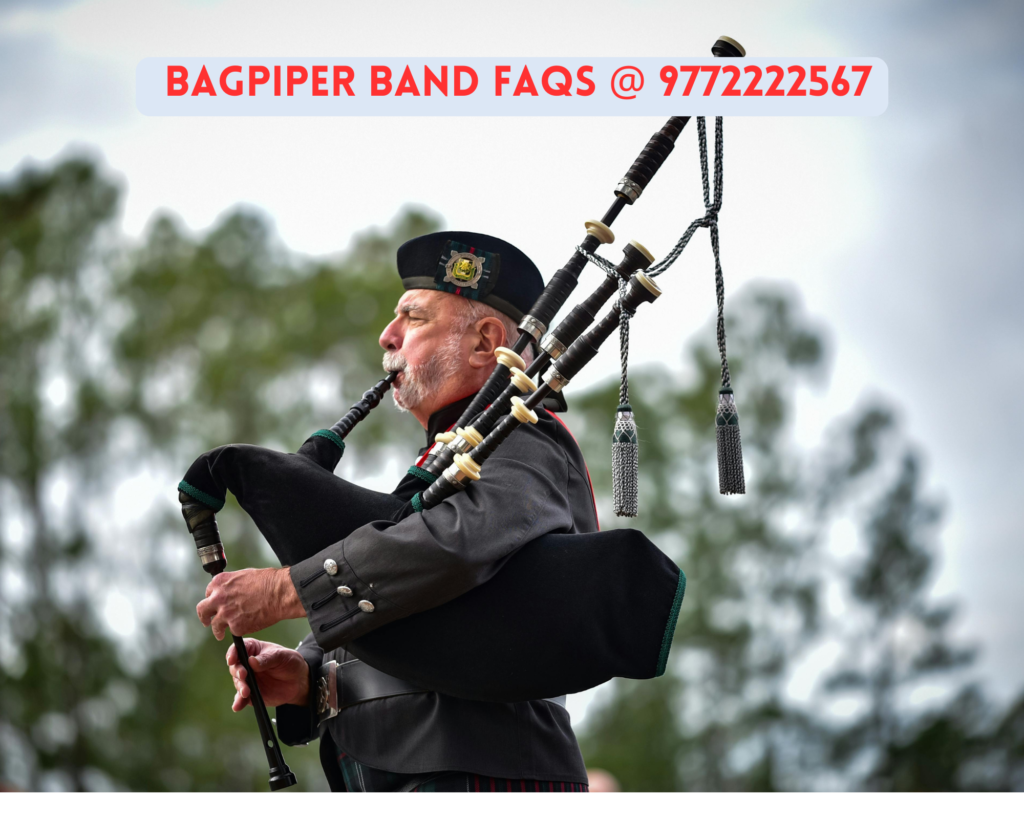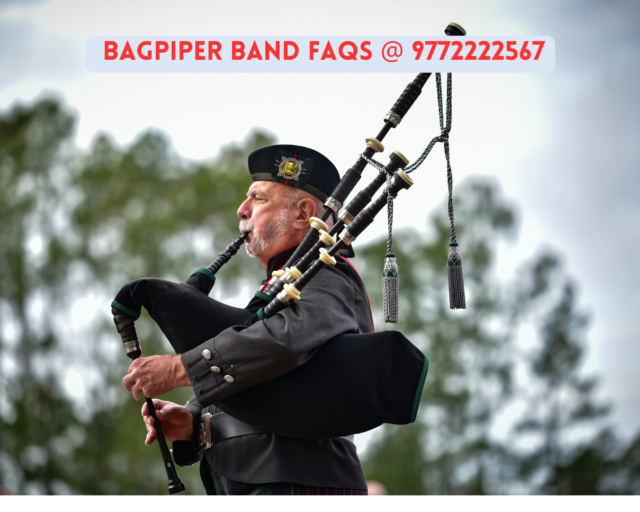Bagpiper Band FAQs
Curious about the logistics of hiring a bagpiper band for your wedding, funeral, graduation, or other event? This comprehensive Bagpiper Band FAQs page covers essential topics like booking procedures, pricing structures, performance options (solo, duo, full band), repertoire choices (traditional, contemporary, and more), attire options, and tips for ensuring a smooth and memorable experience.
A Guide to Bagpiper Band FAQs
The stirring melodies of the bagpipes have captivated audiences for centuries. If you’re considering incorporating this unique sound into your event, a bagpiper band might be the perfect choice. But before you march forward, here’s a guide to some of the most frequently asked questions about bagpiper bands, ensuring a smooth and unforgettable experience.
Booking and Logistics
How far in advance should I book a bagpiper band?
Scheduling well in advance is recommended, especially for popular dates and peak seasons. Aim for at least 3-6 months to secure your preferred band and performance time.
What information do I need to provide when booking?
Be prepared to share details like event date, location, duration of performance, and desired number of pipers. Some bands might also inquire about specific musical selections or attire preferences.
Do bagpiper bands require a deposit?
Most bands require a deposit to confirm the booking, typically ranging from 20% to 50% of the total fee.
Pricing and Payment
How much does it cost to hire a bagpiper band?
Fees can vary depending on factors like location, band size, performance duration, and travel requirements. Generally, expect to pay between $300 and $1000 per hour for a band.
What payment methods do bagpiper bands typically accept?
Cash, check, and online payment options like PayPal or Venmo are widely accepted. Be sure to clarify payment methods and any associated fees upfront.
Are there any additional costs to consider?
Additional costs might include travel fees if the venue is outside the band’s local area, overtime charges if the performance extends beyond the booked time, or special requests for specific music or attire.
Performance Options
How many pipers are typically in a bagpiper band?
Bagpiper bands can range in size from solo pipers to full ensembles with multiple pipers, drummers, and other instrumentalists. The ideal size depends on your event’s scale and desired atmosphere.
What kind of music do bagpiper bands play?
The repertoire typically includes traditional Scottish tunes, medleys of popular songs, and even contemporary music arranged for bagpipes. Many bands offer customization options to tailor the playlist to your preferences.
Can bagpiper bands play indoors and outdoors?
Absolutely! Bagpipes are versatile instruments that can resonate beautifully in both open-air and enclosed spaces.

Attire and Presentation
What do bagpiper bands typically wear?
Traditional attire often includes kilts, sporrans, hose, and feathered caps. Some bands might offer a choice between formal and semi-formal dress options.
Can I request a specific tartan for the band’s kilts?
While some bands have their own tartan, some might be open to discussing the possibility of wearing a tartan of your choice, especially if it holds special significance for your event.
How much space do bagpiper bands require to perform?
The space requirement depends on the band’s size. A solo piper needs minimal space, while a larger band might require a designated area to move around comfortably.
Creating a Memorable Experience
How can I ensure a smooth performance on the event day?
Clear communication is key. Provide the band with detailed information about the event schedule, location specifics, and any necessary access instructions.
What happens if there’s bad weather on the day of the event?
Discuss backup plans with the band in case of inclement weather. Some bands might have portable shelters or be flexible with performance locations if necessary.
Can I request special musical pieces or performances?
Absolutely! Many bands welcome the opportunity to learn new pieces or cater to specific requests. Be sure to discuss these well in advance to allow sufficient practice time.
By considering these FAQs and having open communication with your chosen bagpiper band, you can set the stage for a truly magical and unforgettable event filled with the stirring sounds of the bagpipes.
The Origins of Bagpiper Bands
Cultural Significance of Bagpipes Across Regions
Types of Bagpipes Used in Bagpiper Bands
How Bagpiper Bands Add Elegance to Events
Fauji Bagpiper Bands in India: A Historical Perspective
The Role of Bagpiper Bands in Royal Ceremonies
Training and Skill Development in Bagpiping
Famous Bagpiper Bands Across the Globe
Bagpiper Bands in Indian Weddings and Festivities
Challenges Faced by Modern Bagpiper Bands
Preservation of Bagpiper Band Traditions in the Digital Era
How to Hire a Bagpiper Band for Your Event
Iconic Performances by Bagpiper Bands
FAQs About Bagpiper Bands
Future of Bagpiper Bands: Innovations and Trends
Introduction:
Bagpiper bands are more than just musical ensembles; they are cultural ambassadors, storytellers, and symbols of grandeur. The melodious yet commanding sound of bagpipes has resonated through history, carrying with it tales of valor, celebration, and unity.
“The World of Bagpiper Bands: Traditions, Culture, and FAQs,” takes you on a journey to explore the vibrant world of bagpiper bands, their origins, and their continuing legacy in a rapidly changing world.
From the misty highlands of Scotland to the bustling streets of India, bagpiper bands have carved a unique identity in different parts of the world. This book delves deep into the history of bagpipes, tracing their roots back to ancient civilizations and their evolution into the ceremonial instruments we know today.
We explore how bagpipes became integral to military processions, royal events, and cultural festivals.
For readers keen to understand the specifics, we provide insights into the types of bagpipes, the intricate training involved in mastering the instrument, and the diverse occasions where bagpiper bands take center stage. Special emphasis is placed on Fauji Bagpiper Bands in India, whose distinct style and grandeur have made them a staple at weddings, state events, and other significant celebrations.
However, the journey is not without challenges. Modern bagpiper bands face hurdles in preserving their traditions while adapting to contemporary audiences. It sheds light on the efforts to keep this art alive and thriving, even in the digital age.
Moreover, it addresses frequently asked questions about bagpiper bands. What should you consider when hiring one for an event?
How do they adapt to various cultures and genres? These and many other questions find detailed answers in our comprehensive Bagpiper Band FAQs.
By the end of this book, you will not only have a profound appreciation for the artistry of bagpiper bands but also practical knowledge about engaging with them for personal or professional occasions. Whether you’re a music enthusiast, event organizer, or someone curious about cultural traditions, this book is your ultimate guide to the fascinating world of Bagpiper Band FAQs.
Chapter 1: The Origins of Bagpiper Bands
Bagpiper bands, with their soul-stirring melodies, have a rich and varied history that spans continents and centuries. From their rudimentary beginnings to becoming a cultural phenomenon, this chapter unpacks the origins of bagpiper bands, focusing on their historical, geographical, and cultural significance.
The exact origin of the bagpipe is a topic of debate among historians, with references to the instrument found as far back as ancient Egypt and Rome. Some theories suggest that the bagpipe’s first appearance was as a pastoral instrument, used by shepherds in ancient Europe and the Middle East. These primitive versions of bagpipes were crafted from animal hides and simple reeds, creating the foundation for the instruments we recognize today.
In medieval Europe, bagpipes gained prominence in Scotland, where they became closely associated with Highland culture. Here, they evolved into the Great Highland Bagpipes, known for their powerful sound and ceremonial significance. By the 16th century, bagpipes were being used in military settings, rallying troops with their stirring tunes and boosting morale on the battlefield.
In India, bagpipes were introduced during British colonial rule. Indian musicians quickly adapted the instrument to local traditions, giving rise to the Fauji Bagpiper Bands. These bands became an integral part of military processions and state ceremonies, blending Western musical techniques with Indian flair.
This chapter also explores the spread of bagpipes to regions like Ireland, Eastern Europe, and the Middle East, highlighting the instrument’s versatility and adaptability. Each culture added its distinct touch, from the uilleann pipes of Ireland to the gaida of Bulgaria, contributing to a rich tapestry of bagpipe music.
Bagpiper bands, as we know them today, emerged as organized groups during the 19th and 20th centuries. Military regiments, particularly in Scotland and India, played a significant role in popularizing the concept. Over time, these bands moved beyond military contexts, becoming sought-after performers for weddings, corporate events, and cultural festivals.
The chapter concludes by emphasizing the enduring legacy of bagpiper bands, which continue to be cherished symbols of tradition and celebration worldwide. Their story is one of resilience and adaptation, proving that music truly knows no boundaries.
Tags: Bagpiper Band FAQs, Bagpiper band hire, Hire bagpipers, Book bagpipers, Bagpipe music for events, Bagpipe performances, Scottish music for events, Celtic music for events, Wedding bagpipers, Funeral bagpipers, Graduation bagpipers, Corporate event bagpipers,




